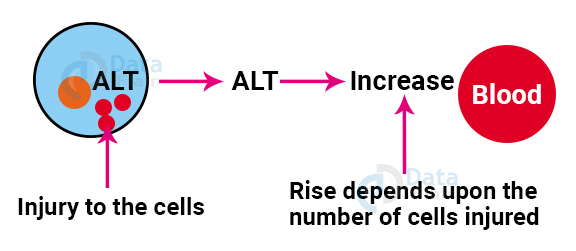Full Form Of SGPT
We offer you a brighter future with FREE online courses - Start Now!!
SGPT stands for Serum Glutamic Pyruvic Transaminase. This is an enzyme that is common in heart and liver cells and gets released into the bloodstream during any heart and liver injury. Apart from this some medicines and liver and heart disorders can also increase the volume of SGPT in the blood.
It is also known as alanine aminotransferase (ALT) and its highest concentration is present in the liver. The blood test of SGPT determines the quantity of Glutamate Pyruvate Transaminase (GPT) in blood serum.
Advantages of SGPT test
- It tells the functional status of your liver and if your liver has any disease or weakness.
- Tells whether the SGPT level is stable or not.
- Classifies hepatic insufficiency, liver dysfunction, viral hepatitis, jaundice, and alcoholism.
- It helps detect if the patients suffering from Jaundice, Dark Urine, Nausea, Vomiting, and Pain signs in the abdomen’s right upper quadrant.
SGPT normal range in the human body
SGPT usually ranges between 7-56 units per Litre of serum. Though this range can slightly differ depending on the procedures and protocols of the labs.
Features of SGPT Laboratory Test
- A minimum of 5 ml of blood is necessary to perform an SGPT test. After the completion of the test, the laboratories consider a range of zero to 30 units per litre.
- Acute viral hepatitis A and B, hepatitis C, celiac disease, diabetes, Epstein Barr virus, heart attack, obesity, dermatomyositis, and inflammation of the gallbladder are some disorders that can induce high levels of SGPT.
- The patient needs to undergo dietary modifications in order to reduce the SGPT level. Some of these modifications are introducing vitamin D to your diet and adding some common workouts like swimming, brisk walking, and jogging.
Risk related to SGPT test
ALT can cause a scar where the needle was stuck, for example. Apart from this following are some other complications that may arise:
- Heavy bleeding at the injection area.
- Blood accumulation under the skin ( hematoma).
- Infection at injection sites.
If you are Happy with DataFlair, do not forget to make us happy with your positive feedback on Google


